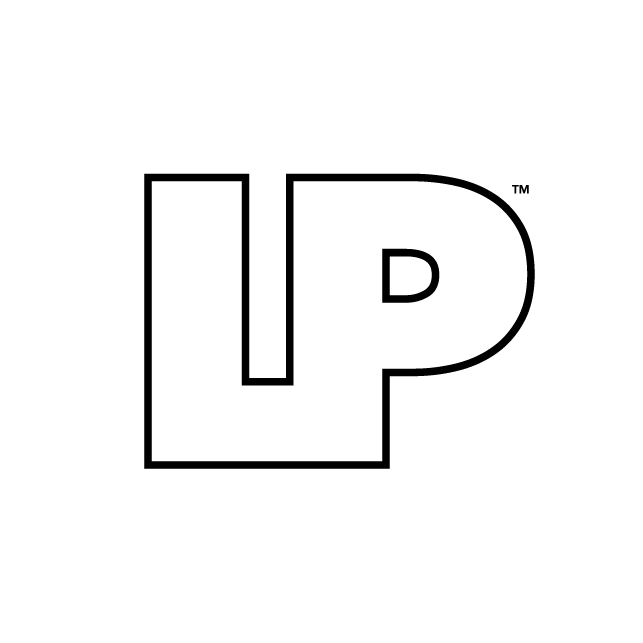
If you’re a digital marketer, business owner, or even someone with a personal brand trying to navigate the labyrinth of social media advertising, you might have noticed something: the cost of advertising on Meta platforms (Facebook, Instagram, and other related properties) has been steadily climbing. In 2025, this trend isn’t slowing down, and in fact, it’s accelerating faster than you can say “A/B test.”
At Latitude Park, we’ve seen firsthand how the increasing costs of Meta ads have been changing the way brands approach digital marketing. But don’t worry, it’s not all doom and gloom! In this post, we’re going to break down why Meta advertising costs are rising and, more importantly, what you can do about it. Spoiler alert: there are still plenty of ways to maximize your advertising dollars without burning a hole in your budget. Let’s dive in, shall we?
What’s Going on With Meta’s Ad Costs in 2025?
Let’s face it: if you’re reading this, you’ve probably noticed that your Meta advertising costs have been steadily climbing. You might have even done a double-take when your most recent ad spend report hit your inbox. But why exactly is this happening, and more importantly, what’s behind this inflation in ad costs?
1. Increased Competition on Meta’s Platforms
The digital marketing world is more crowded than ever, and that’s driving up advertising costs across the board. In 2025, businesses are pouring more money into Meta ads than ever before. The reason? Social media advertising is now a must-have for brands that want to be seen, heard, and remembered. Whether you’re selling luxury skincare or trying to promote the next viral meme, the competition is fierce.
More businesses are vying for the attention of users on platforms like Facebook and Instagram, especially with new eCommerce features, shopping integrations, and in-app purchases. This increased demand naturally leads to higher prices. Think of it like a fancy restaurant with limited seating—everyone wants a spot at the table, so the price of admission (aka ad space) goes up.
The result? Higher costs per click (CPC) and cost per impression (CPM). If you’re not already adjusting your bidding strategies, you might find yourself paying a premium for that elusive “prime” audience.
2. Declining Organic Reach
Ah, organic reach—the dream of every marketer. Sadly, like most good things, organic reach on Meta platforms has been steadily dwindling over the years. In 2025, businesses can no longer rely solely on organic content to drive traffic or engagement. With changes in Meta’s algorithm, organic posts now reach a smaller percentage of followers, and getting noticed is harder than ever.
As a result, more businesses are turning to paid ads to get their content in front of a larger audience. The increase in paid ads has resulted in a higher overall demand for ad space, pushing the prices up. If you’re a business that’s been relying heavily on organic content and haven’t yet made the shift to paid campaigns, it’s time to start planning for that transition. The higher costs of ads are a direct consequence of less organic reach.
3. More Sophisticated Targeting (and More Expensive)
Meta has continuously improved its targeting capabilities, allowing advertisers to reach hyper-specific audiences based on factors like location, interests, behaviors, and even life events. And while this advanced targeting is undoubtedly a game-changer for marketers (we love it too), it comes at a cost.
Here’s the deal: because advertisers can now target smaller, more niche audiences, the competition for those specific groups of people increases. And when demand increases for highly targeted audiences, so do the prices. Want to target high-income earners in a specific geographic area? Be prepared to pay a little more for that highly specific targeting.
Meta’s targeting options have become so advanced that advertisers are now willing to pay a premium for the opportunity to reach exactly the people they want to. While this level of precision can yield amazing results, it also means that advertisers are increasingly bidding for the same audiences, driving up the price of clicks and impressions.
4. Global Economic Factors
Let’s face it, 2025 is still dealing with the aftermath of the economic uncertainty that affected the world in previous years. With inflation rates, global economic recovery, and fluctuating currency values, advertising costs are being influenced by factors outside the control of advertisers.
Meta, like other ad platforms, must adjust its pricing models to account for these economic changes. As Meta continues to operate in multiple countries, the rising costs of doing business, including infrastructure, data centers, and employee salaries, also affect ad prices. It’s one big ecosystem that, unfortunately, makes its way into your ad spend.
While it’s not exactly fun, it’s a reality of doing business in the digital age. But don’t worry—there are still ways to make your ad dollars go further.
5. Increased Use of Video Ads and Interactive Formats
Here’s a fun one: if you’ve been paying attention to social media advertising trends, you’ll know that video ads are booming. In fact, Meta has doubled down on video and interactive ad formats in recent years, from Instagram Reels to Facebook Stories to in-stream video ads. These immersive, dynamic ad formats are great for engaging users, but guess what? They’re also more expensive.
Why? Because video content requires more resources to produce (think production time, editing, creativity) and more bandwidth to deliver, making them more expensive to advertise. Additionally, video ads generally have a higher engagement rate, which leads to a greater demand for this format, further increasing the cost.
If you’re still sticking to traditional static images and carousels, consider experimenting with video ads. They might cost more per impression, but they can provide higher engagement and better ROI in the long run. Pro tip: create snackable, high-impact videos that don’t require a Hollywood budget.
6. The Shift to “Privacy-First” Advertising
Privacy concerns have been at the forefront of digital advertising for the past few years, and in 2025, things are only getting more “privacy-first.” With laws like GDPR in Europe and Apple’s App Tracking Transparency (ATT) making it harder to track user behavior, Meta has had to adjust its advertising models to comply with privacy regulations.
While these changes are good for consumers (they definitely should have control over their data), they’ve made it more challenging for advertisers to target users effectively. This has led to Meta’s increasing reliance on machine learning and AI to optimize ad delivery, which costs money to maintain and develop.
As Meta adapts to a more privacy-conscious world, it’s important to keep in mind that the changes to the ad ecosystem may drive prices up in the short term. So, as a business, you may need to allocate more of your budget to stay ahead of the curve.
7. Meta’s Algorithm Changes
Meta’s algorithm has always been in flux, and 2025 is no different. Meta is constantly tweaking its algorithm to improve user experience and keep advertisers happy. With each change, there can be both positive and negative impacts on ad performance.
Sometimes, these algorithm shifts result in ads becoming more competitive, especially if the changes prioritize certain types of content or ad formats. Advertisers who are quick to adapt may have an edge, but others may find themselves scrambling to adjust their strategies, leading to higher competition for the same audiences.
The result? You guessed it—higher ad costs. To combat this, it’s crucial to stay informed about Meta’s algorithm changes and adjust your ad strategy accordingly. Testing, learning, and adapting are key to navigating this ever-changing landscape.
What Can You Do About It? Strategies for Maximizing Your Meta Ad Spend
Now that we’ve covered the reasons behind the rising ad costs, you’re probably wondering, “What can I do to ensure my advertising dollars are well spent?” Here are some actionable strategies to help you maximize your ROI and get the most out of your Meta advertising campaigns:
1. Optimize Your Audience Targeting
While the price for reaching specific audiences is rising, that doesn’t mean you should cast a wide net and hope for the best. In fact, narrowing your target audience and refining your ad targeting is more important than ever. Instead of targeting a broad group of people, focus on a specific niche—whether by age, location, interests, or behavior. This can help you reduce wasteful spend and ensure your ads are reaching people who are more likely to convert.
Meta’s robust targeting options are powerful, but they can be overwhelming. Start by defining your ideal customer profile and use the available data to create highly-targeted campaigns that resonate with them. Don’t be afraid to experiment with Custom Audiences, Lookalike Audiences, or even dynamic ads.
2. Test and Optimize Your Ads
In 2025, there’s no excuse for not testing your ads. Meta’s platform allows you to A/B test different creative, copy, and audience segments to see what works best. Regularly testing and optimizing your ads helps you identify what resonates with your audience and ensures that your budget is going toward the most effective ads.
Be sure to track key metrics like click-through rates (CTR), conversion rates, and return on ad spend (ROAS) to determine which ad sets are delivering the best results. By continuously testing, you can ensure that your campaigns evolve and stay competitive in a crowded market.
3. Use Retargeting to Maximize ROI
Retargeting is a powerful tool to reach people who have already shown interest in your brand or products. By showing targeted ads to users who have interacted with your website, app, or social media, you increase the likelihood of conversions. Retargeting campaigns tend to be more cost-effective since you’re advertising to people who are already familiar with your brand.
If you’re not already using retargeting, now is the time to integrate it into your strategy. Just be sure to monitor the frequency of your ads to avoid overexposure (and annoyance).
4. Focus on High-Quality Content
With the rising costs of advertising, the content itself must work harder to justify the expense. High-quality, engaging, and creative content will stand out in a crowded feed and drive better engagement. Whether you’re using video, carousel ads, or user-generated content, make sure your ads are visually appealing and aligned with your brand message.
Think about what makes your audience click, comment, or share. Focus on creating content that’s entertaining, educational, or emotionally resonant. Good content not only captures attention but also encourages action.
5. Diversify Your Marketing Channels
Meta may be the go-to platform for social media advertising, but it’s not the only one. To avoid putting all your eggs in one basket, diversify your ad spend across multiple platforms like Google Ads, LinkedIn, TikTok, and even YouTube. Each platform offers unique ad formats and targeting capabilities, allowing you to reach different audiences and keep your advertising costs more predictable.
Don’t be afraid to experiment with new platforms and strategies. And remember, Latitude Park can help you navigate these platforms and optimize your advertising approach for maximum efficiency and effectiveness.
Conclusion: Staying Ahead of the Meta Ad Cost Curve
Meta advertising costs may be on the rise in 2025, but that doesn’t mean you’re doomed to watch your budget disappear. By understanding the factors driving these increases and implementing smart strategies like refined audience targeting, A/B testing, retargeting, and high-quality content, you can still achieve great results from your Meta ads.
At Latitude Park, we specialize in helping businesses navigate the ever-changing landscape of digital advertising. Whether you need assistance with ad strategies, content creation, or multi-platform campaigns, we’re here to help you get the most out of your advertising dollars. Let’s face it—Meta’s advertising costs may be climbing, but with the right approach, so can your business’s success.
Ready to break through the Meta advertising cost barrier? Contact Latitude Park today, and let’s make 2025 the year your ad strategy takes off.









